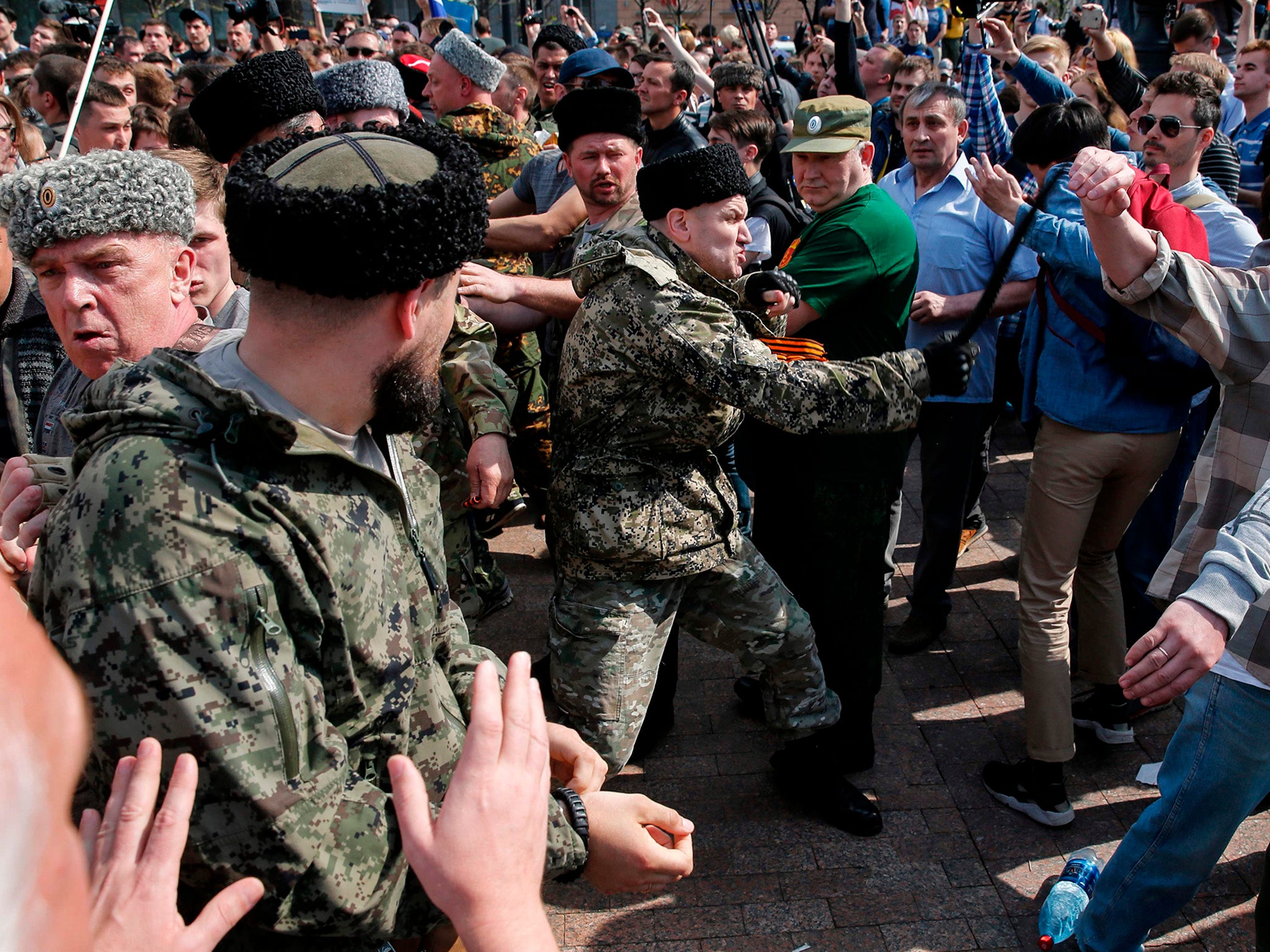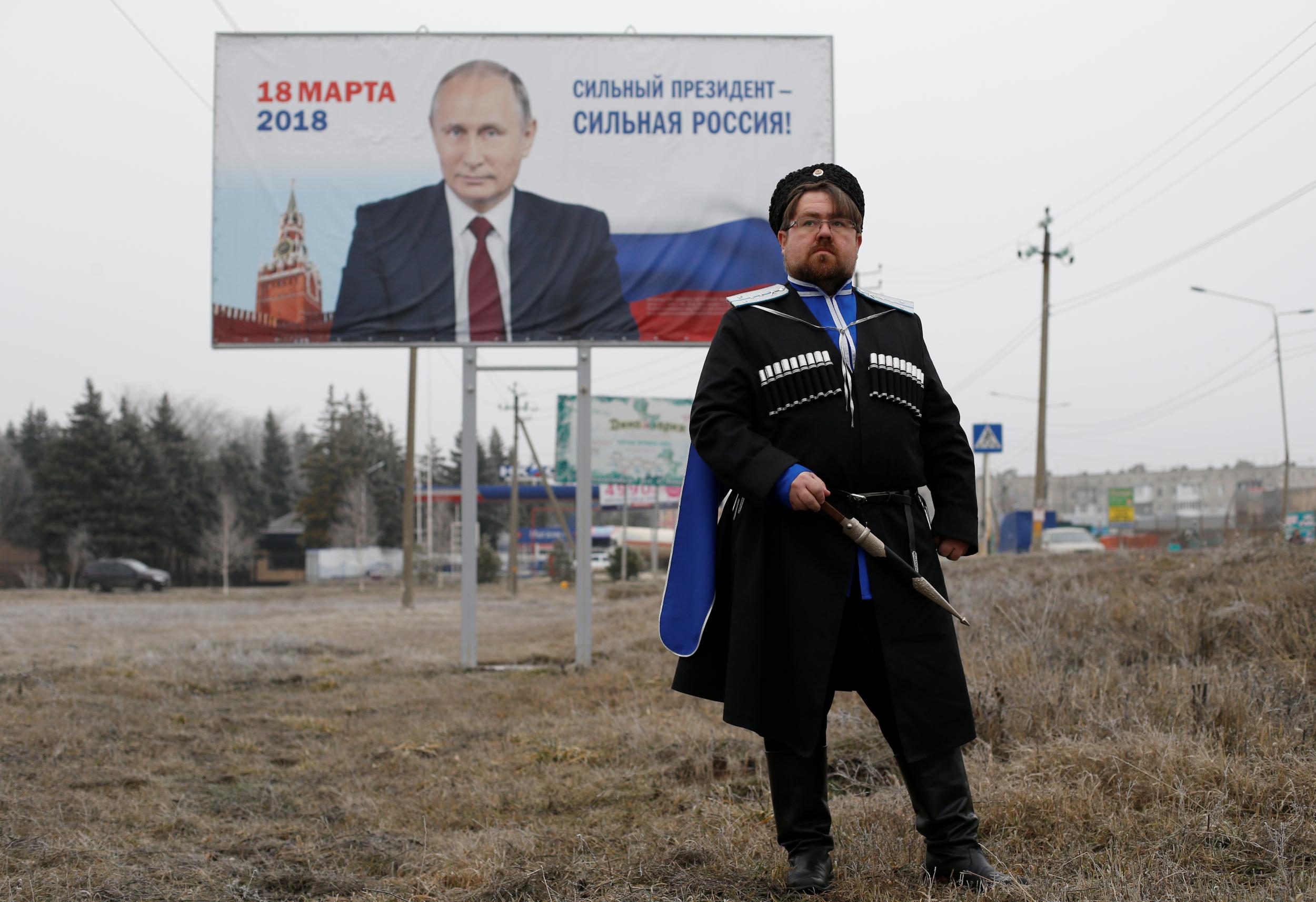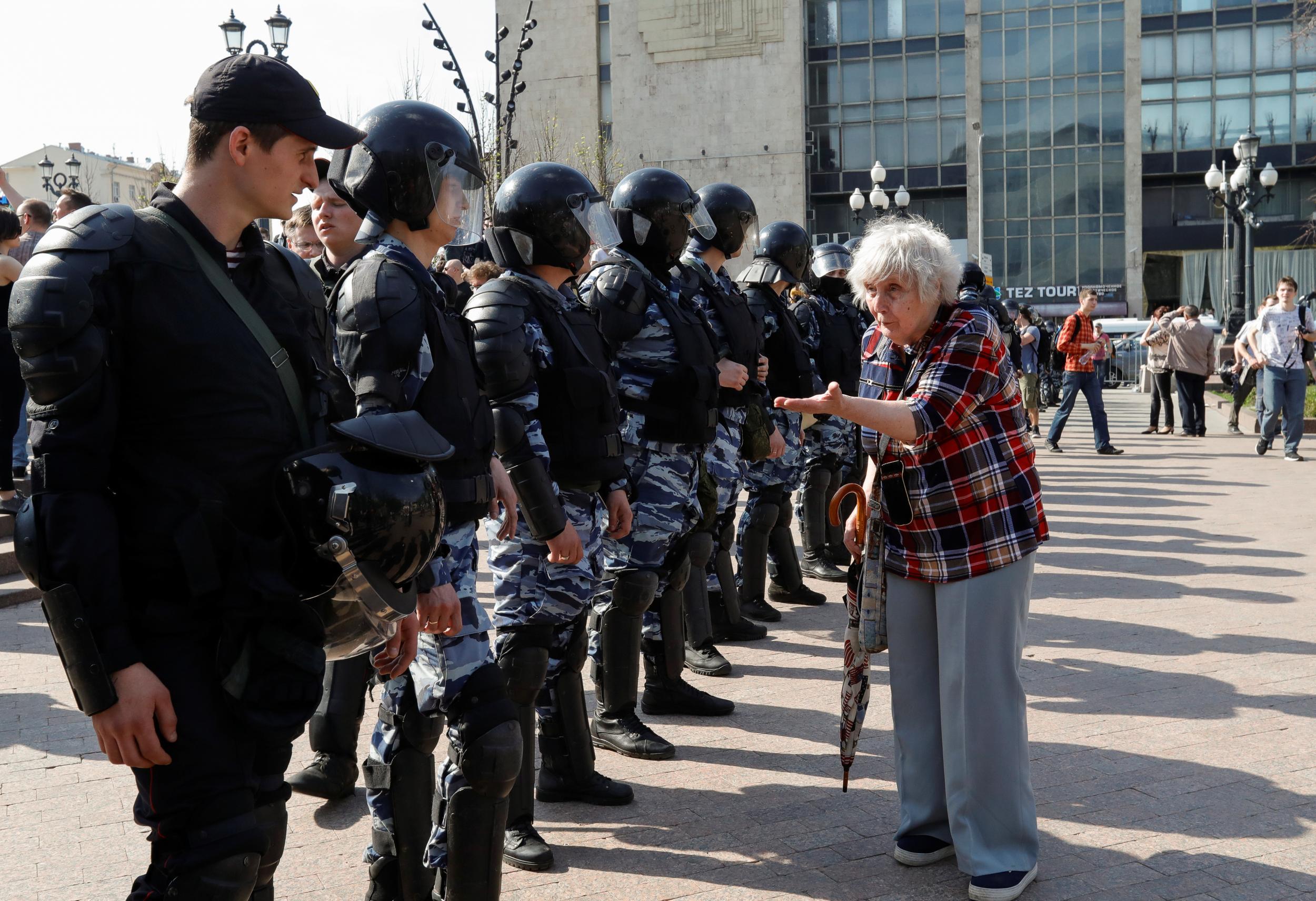Meet the nationalist paramilitaries set for an official role in Russia's World Cup
Kremlin deploys Cossacks to Moscow for first time in a century to suppress protests

Your support helps us to tell the story
From reproductive rights to climate change to Big Tech, The Independent is on the ground when the story is developing. Whether it's investigating the financials of Elon Musk's pro-Trump PAC or producing our latest documentary, 'The A Word', which shines a light on the American women fighting for reproductive rights, we know how important it is to parse out the facts from the messaging.
At such a critical moment in US history, we need reporters on the ground. Your donation allows us to keep sending journalists to speak to both sides of the story.
The Independent is trusted by Americans across the entire political spectrum. And unlike many other quality news outlets, we choose not to lock Americans out of our reporting and analysis with paywalls. We believe quality journalism should be available to everyone, paid for by those who can afford it.
Your support makes all the difference.Russia’s minority opposition is by now used to many things – but few of its members were prepared for the scene that greeted them last Saturday.
Instead of arriving at an anti-Putin rally, demonstrators found that nationalist “demonstrators” and Cossack soldiers had already taken up positions on the main square.
In the uneasy standoff and violent crackdown that followed, these irregular formations appeared to work in sync with police forces, peeling off protesters one by one, some using traditional Cossack leather whips. In total, police arrested 719 in Moscow that day. Several were hospitalised.
In Russian law, Cossack groups can assist police in public control. But this was the first time since pre-revolutionary times that they had been deployed in this way in the capital. And many have wondered if it is was a sign of things to come.
“Cossacks in southern Russia is one thing, but they have a bad reputation in the capital,” said former Kremlin advisor Gleb Pavlovsky. “People remember how they were used against students and the intelligentsia in the run-up to the revolution.”
The Cossacks were largely liquidated during the 1920s; as the Tsar’s henchmen, they were obvious enemies of the new Communist regime. But they saw a revival among activists after the fall of the Soviet Union. A 1995 law legalised their existence.
The new Cossacks were initially figures of fun, with their strange paraphernalia and dubious claims of historical lineage. But in Vladimir Putin’s third term, as the Kremlin looked to create a nationalist, conservative ideology, they became influential. They began to receive significant state funding and political support.

Open source activists have, for example, managed to determine that at least one of the three Cossack groups identified on Saturday received grants from the Moscow mayor’s office totalling 16 million roubles (£191,000).
Cossack groups have returned the Kremlin’s favours with vigilante campaigns in line with their nationalistic priorities. They have attacked liberal galleries, theatres and opposition activists. They whipped Pussy Riot members as they attempted to perform an anti-Putin song at the Sochi Olympics.
The Cossack brand was also highly visible in military campaigns in eastern Ukraine. Several leading commanders, from the ataman Nikolai Kozitsyn to the former bricklayer Pavel Dryomov, wore the red papakha hat.
“The new Cossacks are part of a broader movement of armed Russian nationalism,” said Nikolay Mitrokhin, a senior research fellow at the University of East Finland. “Most of them fought in the Donbass, and many of them took part in the occupation of Crimea. It would appear that the Kremlin is now thinking about using them in Moscow in the same way.”
According to Mr Mitrokhin, the vast majority of Cossacks were once special forces or paratroopers, and many of them went on to work in the riot police.
“That is the most common feature of the biographies of those who took part on Saturday,” he said.
The Independent spoke to one of the Cossacks involved in the violent clashes on Saturday. Vasily Yaschikov, a member of the “first hundred,” division, is a native of Donetsk who resettled in Moscow. He is a veteran of the Ukrainian conflict. Together with others from the division, he fought in the battle for Saur Mogila, in southern Donbass, one of the war’s bloodiest.
He says his group coordinated with each other on social media prior to attending Saturday’s demonstration. They had “wanted to show their opinion as Cossacks”. He denies they worked in cahoots with the security services and insists they were instead provoked into action by the protesters themselves.
“They were aggressive and started teasing us – asking us why we were dressed in our hats when it was so hot,” he said. “They tried to take the hats off us – yes, it all started with the hats.”
Video evidence suggests a different chronology and shows how some of the Cossacks goaded protesters towards riot police.
The most senior official Cossack, Viktor Vodolatsky, a deputy of the State Duma and a member of the ruling faction United Russia, told The Independent that the Cossack groups had appeared at the demonstration “by accident”.
“They were actually heading to a concert,” he said. “On the way, they saw crowds of crazy youngsters, so of course they provided support to the law enforcement officers. Cossacks always act for order, for discipline.”

Mr Vodolatsky, who reportedly played a leading role in Russia’s Crimean campaign, also confirmed Cossack troops would be deployed in the World Cup. Contrary to some reports, however, they would not be present in Moscow; this is possibly a consequence of the scandal last week. Instead, they will be used in matches taking place in southern Cossack heartlands.
This includes Volgograd, where England are due to play group matches.
English fans have nothing to be worried about, he insisted. Cossacks are “friendly”, “hospitable” people – and had been given foreign language training especially for the occasion.
Mr Pavlovsky said it was inconceivable that Cossack groups were present last Saturday without agreement from the security services (FSB).
“It needed a decision from one of the FSB directorates, at the very least,” he said. “Usually demonstrators are classed as extremists, which means the FSB’s Department ‘E’ is the last point of authority.”
The former Kremlin advisor says authorities previously coopted nationalistic groups to do their dirty work. But this was usually of the level of the police or FSB, who fostered close links with certain hooligan and anti-immigrant networks.
“But these were also different times,” he said. “I left when Medvedev was president, and authorities weren’t then trying to exaggerate tensions in society.”
Now the Kremlin seems to be openly embracing a “Ukrainian” model of crowd control – sending “titushki” thugs from the heartland to suppress conflict in the capital.
“That decision, as we know, led to a radicalisation against Yanukovych’s government,” he said. “We shall see what happens here.”
Join our commenting forum
Join thought-provoking conversations, follow other Independent readers and see their replies
Comments